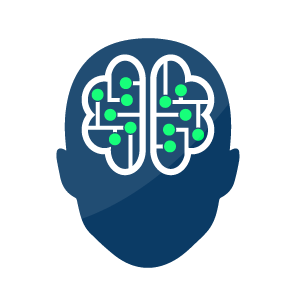Virtual Reality in Rehab: Exploring the Latest Insights from Successful VR-Based Rehabilitation Programs
Written by: Brianna Hodge
Have you ever considered how virtual reality (VR) might revolutionize the field of rehabilitation? We frequently hear about the remarkable strides being made in technology, but it is when these innovations are applied in real-world settings that their true impact becomes clear. VR is no longer a distant vision of the future; it is actively being implemented in rehabilitation programs worldwide, aiding patients in achieving faster and more effective recoveries.
Let us delve into some of the successful rehabilitation programs that are harnessing VR, and examine how this groundbreaking technology is transforming lives.
Stroke Rehabilitation at the University of Southern California
Stroke recovery can be a daunting journey, often marked by the challenge of regaining lost motor functions through repetitive exercises that can feel tedious and discouraging. However, the University of Southern California (USC) is transforming stroke rehabilitation with its innovative use of virtual reality (VR). Their program enables patients to engage in virtual exercises that mimic real-life tasks, offering a safe and controlled environment for the essential repetitive practice required for recovery.
Consider a patient who has lost the ability to use their right arm. Traditional therapy often consists of repetitive movements that can quickly become monotonous. However, with the integration of VR, these exercises acquire a new level of engagement. Instead of simply repeating motions, patients may find themselves in a virtual kitchen, reaching for objects on a shelf or stirring a pot. The immersive quality of these activities makes the exercises feel more purposeful, thereby enhancing patient motivation and engagement throughout the rehabilitation process.
Research from USC has shown that patients using VR for upper limb rehabilitation after a stroke experience significant improvements in motor skills compared to those relying solely on traditional therapy. The key to this success lies in the combination of repetitive practice with an engaging, immersive environment that makes the hard work of rehabilitation feel less like a chore and more like a vital step toward regaining independence (Rizzo and Koenig).
Chronic Pain Management at Cedars-Sinai Medical Center
Chronic pain is a relentless burden that can make even the simplest tasks feel overwhelming. At Cedars-Sinai Medical Center in Los Angeles, VR is being used to offer patients a new way to manage their pain—one that doesn’t rely on medication. The hospital’s VR program immerses patients in soothing virtual environments, like tranquil beaches or serene forests, during their physical therapy sessions. This approach helps to distract patients from their pain, allowing them to focus more fully on their therapy.
Imagine being in a hospital bed, where each movement is accompanied by significant pain. Now imagine slipping on a VR headset and suddenly finding yourself walking along a peaceful beach, with the sound of waves gently crashing in the background. This is the kind of experience that Cedars-Sinai is offering its patients. By focusing their attention on these calming virtual environments, patients are able to tolerate more intense physical therapy sessions, leading to better outcomes.
A study published in PLOS ONE found that patients using VR during physical therapy reported a significant reduction in pain levels. The ability to engage in therapy without being overwhelmed by pain has made these sessions more productive and effective. For many patients, VR is more than just a distraction—it’s a game-changer in their journey to recovery (Spiegel et al.).
Cognitive Rehabilitation for Brain Injury at Emory University
Traumatic brain injuries (TBI) can have devastating effects on a person’s cognitive abilities, impacting everything from memory to attention and problem-solving skills. Traditional cognitive rehabilitation can be slow and frustrating, but at Emory University, VR is providing a fresh approach. By offering tailored exercises that adapt to the specific needs of each patient, VR is helping those with TBI rebuild their cognitive functions in a more engaging and effective way.
Consider a patient struggling with memory issues after a car accident. In a typical therapy session, they might be asked to complete repetitive memory exercises. But with VR, these exercises become interactive experiences. The patient might find themselves navigating a virtual city, where they must remember directions, recognize landmarks, and solve puzzles. The immersive nature of VR makes these tasks feel more like a challenge than a chore, which helps to keep the patient motivated.
In one case study, a patient with TBI showed remarkable improvement in cognitive function after undergoing VR-based rehabilitation. Their memory, attention span, and problem-solving abilities improved significantly, leading to better performance in daily activities. This success highlights the potential of VR in cognitive rehabilitation, offering a more personalized and effective approach to recovery (Wade et al.).
Phantom Limb Pain Treatment at the University of Washington
For many amputees, phantom limb pain is a cruel reminder of what they’ve lost. It’s a condition that can be difficult to treat, but the University of Washington has developed a novel approach using VR. Their program creates a virtual representation of the missing limb, allowing patients to see and control it within the VR environment. This innovative therapy helps to reduce phantom limb pain by tricking the brain into thinking the limb is still there.
Consider a patient who has lost their arm. In the VR environment, they can see a virtual arm that they can move and control just like a real one. By interacting with this virtual limb, the brain is fooled into thinking the arm is still present, which helps to alleviate the pain associated with its loss. This therapy has provided relief for many patients who had previously exhausted all other treatment options.
A study published in Frontiers in Neurology demonstrated that this VR treatment led to a significant decrease in phantom limb pain for numerous patients. For many, the therapy offered a sense of control and normalcy that was unattainable with traditional methods. The success of this program at the University of Washington underscores the potential of VR to address even the most challenging rehabilitation needs (Cole et al.).
Conclusion: The Future of VR in Rehabilitation
These case studies offer a glimpse into the transformative power of VR in rehabilitation. From stroke recovery to chronic pain management, cognitive rehabilitation, and phantom limb pain treatment, VR is opening new doors for patients and therapists alike. What’s truly exciting is that this is just the beginning. As technology continues to evolve, we can expect even more innovative applications of VR in healthcare, bringing new possibilities to the field of rehabilitation.
The potential for VR in rehabilitation is vast, and its impact is growing every day. As more research is conducted and more success stories emerge, VR is poised to become an integral part of rehabilitation programs worldwide. For patients, it means more personalized, engaging, and effective therapies. For healthcare providers, it represents a powerful new tool in the quest to improve patient outcomes. We are truly at the dawn of a new era in rehabilitation, and VR is leading the way.
-
Cole, Jonathan, et al. “Virtual Reality to Alleviate Phantom Limb Pain.” Frontiers in Neurology, vol. 10, 2019,https://www.frontiersin.org/articles/10.3389/fneur.2019.01191/full.
Rizzo, Albert, and Skip Rizzo. “Virtual Reality for Psychological and Neurocognitive Interventions.” Journal of NeuroEngineering and Rehabilitation, 2017 https://link.springer.com/book/10.1007/978-1-4939-9482-3
Spiegel, Brennan, et al. “Virtual Reality for Management of Pain in Hospitalized Patients: Results of a Controlled Trial.” PLOS ONE, vol. 14, no. 8, 2019,https://journals.plos.org/plosone/article?id=10.1371/journal.pone.0219115.
Wade, Elizabeth, et al. “Virtual Reality in Cognitive Rehabilitation of Traumatic Brain Injury: A Systematic Review.” Journal of Head Trauma Rehabilitation, 2018







